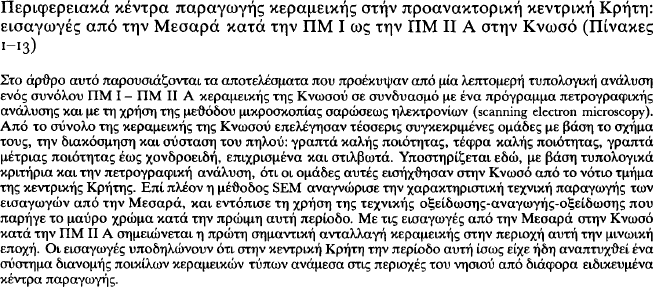This article presents results obtained through detailed stylistic analysis of a body of EM I–EM II A pottery at Knossos in association with a programme of petrographic analysis and scanning electron microscopy. From the Knossian ceramic assemblage, four specific ware groups were chosen for this study on the basis of shape, decoration, and fabric: fine painted, fine grey, painted semi-fine to coarse, and slipped and burnished. It is argued here, on stylistic grounds and on the basis of petrographic analysis, that these groups were imported to Knossos from south central Crete. In addition, scanning electron microscopy characterizes the technology of production of the Mesara imports, and demonstrates the use of oxidation–reduction–oxidation techniques to produce black in this early period. The Mesara imports at EM II A Knossos mark the first sizeable exchange of pottery at this site in Minoan times. They suggest that in central Crete by EM II A there may have been an inter-regional distribution of a broad range of pottery types from various specialized production centres.
